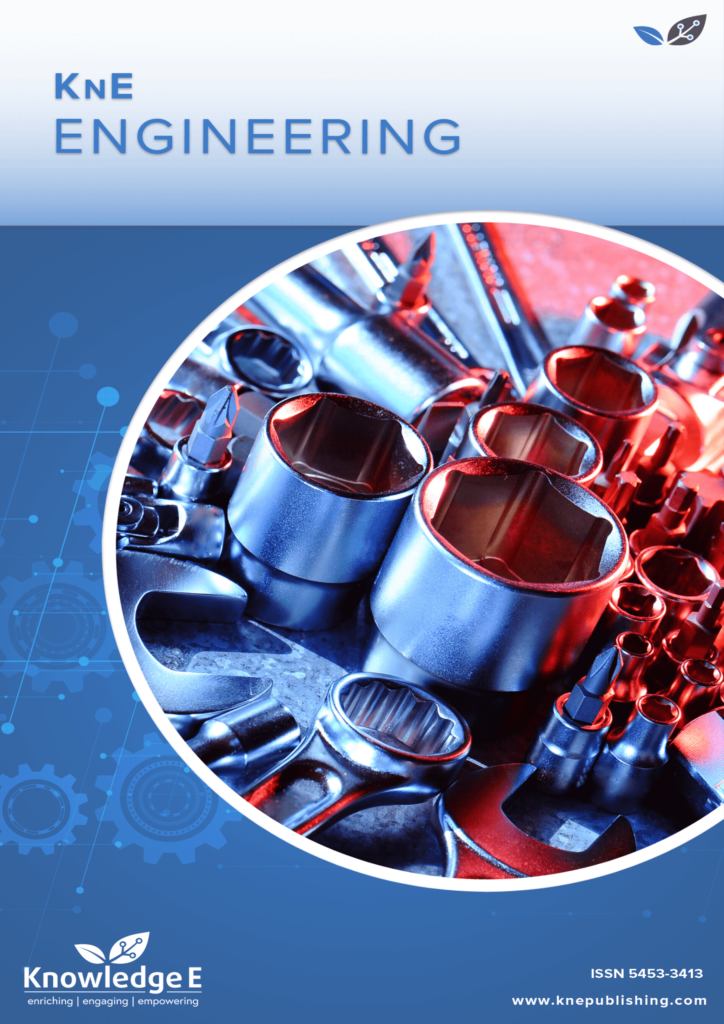
KnE Engineering
ISSN: 2518-6841
The latest conference proceedings on all fields of engineering.
State of the Art - Ergonomics and Modeling of Functional Clothing Products with Biosignals Sensor Integration
Published date:Jun 02 2020
Journal Title: KnE Engineering
Issue title: International Congress on Engineering — Engineering for Evolution
Pages:155–168
Authors:
Abstract:
This literature review aims to introduce and investigate the topics addressed in the development of this project, where we assess the development of functional clothing with integration of bio-signals sensors, exploring the textile materials, ergonomics, andrometry, usability and wearability.
Keywords: Ergonomics/Andrometry, Biosignals sensors, Usability/Wearability, Conforto, Textile materials
References:
[1] Karwowski, W. (2005). Ergonomics and human factors: the paradigms for science, engineering, design, technology and management of human-compatible systems. Ergonomics, vol. 48, issue 5, pp. 436–463.
[2] Wang, Z., Yang,Z. and Dong,T. (2017). A Review of Wearable Technologies for Elderly Care that Can Accurately Track Indoor Position, Recognize Physical Activities and Monitor Vital Signs in Real Time. Sensors, vol. 17, issue 2, p. 341.
[3] Ferreira, A., Ferreira, F. and Paiva, M. C. (2013). Textile sensor applications with composite monofilaments of polymer/carbon nanotubes. Advances in Science and Technology, vol. 80, pp. 65–70.
[4] Ferreira, A., Ferreira, F., Paiva, M. C. et al (2011). Monofilament composites with carbon nanotubes for textile sensor applications. AUTEX 2011, 11th World Textile Conference.
[5] Xie, X. et al. (2010). Three-dimensional carbon nanotube − textile anode for high-performance microbial fuel cells. Nano Letters, vol. 11, issue 1, pp. 291–296.
[6] Leal, A. A., Deitzel, J. M. and Gillespie, J. W. (2007). Assessment of compressive properties of high- performance organic fibers. Composites Science and Technology, vol. 67, issue 13, pp. 2786–2794.
[7] Liu, Y., Hu, H., Lam, J. K. and Liu, S. (2010). Negative Poisson’s ratio weft-knitted fabrics. Textile Research Journal, vol. 80, issue 9, pp. 856–863.
[8] Oliveira,F. R., Fernandes, M., Carneiro, N et al. (2013). Functionalization of wool fabric with phase-change materials microcapsules after plasma surface modification. Journal of Applied Polymer Science, vol. 128, issue 5, pp. 2638–2647.
[9] Vu, N. K. et al. (2013). Effect of particle size on silver nanoparticle deposition onto dielectric barrier discharge (DBD) plasma functionalized polyamide fabric. Plasma Processes and Polymers, vol. 10, issue 3, pp. 285–296.
[10] McCann J. and Bryson, D. (2009). Smart clothes and wearable technology. (UK: Woodhead Publishing).
[11] Ferreira, A. J. S., Nunes Ferreira, F. B. and Oliveira, F. R. (2014). Têxteis Inteligentes–Uma breve revisão da literature. Redige, vol. 5, issue 1.
[12] Post, E., Orth M. and Orth R. (1997). Smart fabric, or” wearable clothing. First International Symposium on Wearable Computers. (IEEE).
[13] Jung, Stefan, et al. (2003). Enabling technologies for disappearing electronics in smart textiles. IEEE International Solid-State Circuits Conference, 2003. Digest of Technical Papers. (ISSCC, IEEE).
[14] Wisner, A. (1996). Questions épistémologiques en ergonomie et en analyse du travail. L’ergonomie en quête de ses principes–Debats épistémologiques, pp. 29-56.
[15] Pheasant, S. and Christine, M. (2018). Haslegrave. Bodyspace: Anthropometry, ergonomics and the design of work. (Boca Raton: CRC Press).
[16] Gupta, D. (2011). Design and engineering of functional clothing. Indian Journal of Fibre & Research, vol. 36, pp. 327–335.
[17] Araújo, M. and Carvalho, M. (2014). Contribuições da antropometria e ergonomia no design de moldes do vestuário de pessoas com necessidades especiais motoras. Dobras vol. 7, issue 14, pp.80-89.
[18] Gonçalves, E. and Lopes, L.D. (2006). Ergonomia no vestuário: conceito de conforto como valor agregado ao produto de moda. Moda Palavra: reflexões em moda, vol. 4, pp.22-29.
[19] Zuanon, R., and Lima, J.R. Design de moda: vestir, sentir e interagir. 10° Congresso Brasileirode Pesquisa e Desenvolvimento em Design (São Luis: P&D Design).
[20] Silveira, I. (2008. Usabilidade do vestuário: fatores técnicos/funcionais. Modaplavra. Eperiódico. Ano, vol. 2, pp. 21–39.
[21] Moraes, A. de (2005). Ergodesign de Produto: agradabilidade, usabilidade e antropometria. (Rio de Janeiro: IUsEr).
[22] de Pesquisa LABERGODesign, Grupo. Vestibilidade: Transposição Teórica e Metodológica com base na ABNT NBR 9241-11/210. 13° Colóquio de Moda, UNESP Bauru -SP, Brazil, 11 a 15 de Outubro 2017
[23] João Gomes Filho (2016), Design do objeto – bases conceituais (in portuguese), Escrituras.
[24] Gho, S. A. (2014). Building better bras for women treated for breast cancer. Doctor of Philosophy thesis, School of Medicine, University of Wollongong.
[25] Geršak, J. (2014). Wearing comfort using body motion analysis. Anthropometry, apparel sizing and design. (UK: Woodhead Publishing), pp. 320-333.
[26] Gupta D. and Zakaria, N. (2014). Anthropometry, apparel sizing and design. (UK: Woodhead Publishing).
[27] Coyle, S. et al. (2010). BIOTEX—Biosensing textiles for personalised healthcare management. IEEE Transactions on Information Technology in Biomedicine, vol. 14, issue 2, pp. 364–370.
[28] Anastasova, S. et al. (2017). A wearable multisensing patch for continuous sweat monitoring. Biosensors and Bioelectronics, vol. 93, pp. 139–145.
[29] Barfidokht, A. et al. (2019). Wearable electrochemical glove-based sensor for rapid and onsite detection of fentanyl. Sensors and Actuators B: Chemical, Volume 296, paper number 126422.
[30] Braga, I. and Mesquita da Silva, L. (2008). Optimização do design do vestuário cirúrgico através do estudo do conforto termofisiológico. Master Thesis, Universidade do Minho, Portugal.
[31] Heinrich, D. P., Carvalho, M. and Barroso, M. (2008). Ergonomia e Antropometria aplicadas ao vestuário– discussão analítica acerca dos impactos sobre o conforto e a qualidade dos produtos. II Encuentro latinoamericano de diseño, vol. 4, Universidad de Palermo, Buenos Aires, Argentina.
[32] Abreu, M.J.A.M. (2004). Contribuição para o Estudo da Parametrização de Têxteis Hospitalares. Dissertation. Universidade do Minho.
[33] Smart Textile Market Size Worth $5.55 Billion By 2025 | CAGR: 30.4%. https://www.grandviewresearch. com/press-release/global-smart-textiles-industry (16/11/2019)